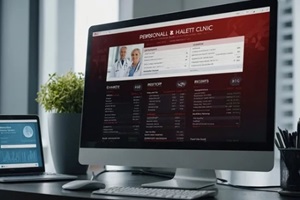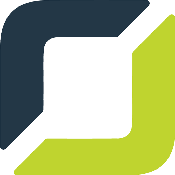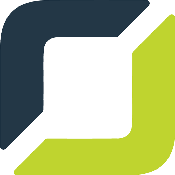Today’s healthcare facilities face the constant and seemingly unending challenge of efficiently managing patient onboarding while maintaining high standards of care.
Custom medical software is revolutionizing this process by cutting down on tedious wait times and minimizing paperwork errors. In this article, we’ll explore how these tailored solutions help streamline administrative tasks and improve patient experiences.
By adopting advanced technology for their intake procedures, healthcare providers can enhance workflow, boost data accuracy, and ultimately elevate the quality of their services. Join us as we explore how custom software is reshaping patient onboarding in healthcare.
The Limitations of Traditional Onboarding Methods
 Traditional onboarding methods in healthcare settings often rely on manual, paper-based processes that can introduce several limitations and challenges, impacting the overall efficiency and effectiveness of patient care delivery.
Traditional onboarding methods in healthcare settings often rely on manual, paper-based processes that can introduce several limitations and challenges, impacting the overall efficiency and effectiveness of patient care delivery.
These traditional approaches frequently lead to many issues, such as data entry errors, redundant paperwork, and significant inefficiencies in the exchange of information, each of which can adversely affect patient satisfaction, staff productivity, and revenue cycle management.
One of the primary challenges of manual onboarding is the high propensity for data entry errors. When patient information is collected and entered by hand, the risk of mistakes — ranging from misspelled names to incorrect medical history data — increases significantly.
These errors require extra time to correct and can lead to serious healthcare mistakes — which can be costly. Furthermore, the physical handling of paperwork requires considerable storage space and can complicate the retrieval of patient records, making the system less efficient and more prone to errors.
Redundant paperwork is another significant issue; patients often have to fill out multiple forms that request the same information, a tedious process prone to inconsistencies between documents.
This redundancy frustrates patients while also placing additional burdens on administrative staff, who must manage and reconcile these documents, diverting time away from more important patient care activities.
The inefficiencies in information exchange within traditional onboarding methods also cannot be overlooked. Manual processes generally mean that the information flow between departments, healthcare providers, and external parties (such as insurance companies) is slow and fragmented.
This lack of cohesion can lead to delays in patient care, errors in treatment plans, and increased operational costs. Inefficient information exchange can extend the revenue cycle, as delays in processing patient information directly impact billing and insurance claims, leading to slower reimbursement and affecting the institution’s financial health.
Patient satisfaction is severely impacted by inefficient onboarding processes. In an age where consumers are accustomed to fast, digital solutions for most of their needs, the slow, cumbersome paperwork of traditional healthcare settings can lead to dissatisfaction and disengagement.
This dissatisfaction can negatively affect the healthcare provider’s reputation and potentially lead to decreased patient retention rates.
The Role of Custom Medical Software
Custom medical software is important in transforming patient onboarding processes from cumbersome, error-prone tasks into much more streamlined and efficient operations. Designed to meet the unique needs of healthcare organizations of all sizes, these custom software solutions optimize every step of the onboarding experience for patients and staff.
 Electronic forms are one of the fundamental features of custom medical software, replacing traditional paper-based forms. These digital forms are more environmentally friendly than traditional paper ones while being far more efficient to fill out and manage.
Electronic forms are one of the fundamental features of custom medical software, replacing traditional paper-based forms. These digital forms are more environmentally friendly than traditional paper ones while being far more efficient to fill out and manage.
They can be pre-populated with patient data pulled from integrated systems, minimizing the need for patients to repeatedly provide the same information and reducing the risk of data entry errors.
Moreover, electronic forms can be designed to include conditional logic, which displays or hides questions based on previous answers, thereby simplifying the completion process and ensuring that only relevant information is collected.
Another significant advantage of custom medical software is how it can help automate workflows by streamlining various administrative tasks such as appointment scheduling, reminders, and follow-ups — all of which are essential for efficient patient onboarding.
Automated workflows ensure that tasks are performed consistently and timely, reducing the workload on staff and decreasing the chances of human error.
For example, once a patient fills out an electronic form, the software can automatically update their profile in the EHR system and schedule them for necessary initial assessments without any manual intervention.
Integration with EHR systems is another important feature of custom medical software. It creates a seamless flow of information between the onboarding software and the patient’s comprehensive medical records, ensuring that all patient information is up-to-date and readily available to healthcare providers at any point of care.
The customization aspect of this software is particularly important because it allows healthcare organizations to tailor the software’s features to their specific operational needs and patient care standards.
So whether it’s adapting the software to support multi-language forms, compliance with local healthcare regulations, or integrating with specialized medical hardware, custom medical software can be developed to meet these unique requirements.
Streamlining Administrative Processes with Custom Software
Custom medical software significantly enhances the efficiency of administrative processes in healthcare settings, especially during the key phase of patient onboarding.
Integrating advanced features such as online appointment scheduling, digital intake forms, and electronic signature capabilities actively streamlines operations while reducing the burden on staff and improving the overall patient experience.
Custom medical software often includes an online appointment scheduling feature, enabling patients to conveniently book their appointments anytime — eliminating the need for phone calls or in-person visits. The system can be integrated directly with the healthcare provider’s calendar to ensure real-time availability and minimize potential scheduling conflicts.
On top of this, it also allows for automatic appointment reminders via SMS or email, which helps reduce no-show rates and improves the efficiency of clinic operations.
This feature is particularly beneficial since it frees up administrative staff from routine tasks and lets them focus on more important aspects of providing exceptional patient care.
Digital intake forms are another pillar of streamlining administrative processes. Unlike traditional paper forms, digital intake forms can be filled out online prior to the patient’s visit, significantly speeding up the onboarding process.
These forms are designed to be user-friendly and can be accessed from any device, enhancing accessibility and convenience for patients.
When data is entered, it automatically updates the patient’s electronic health record, significantly cutting down on manual data entry and reducing the risk of errors associated with it.
Furthermore, these forms can be customized to include essential information specific to different types of visits, ensuring that all relevant data is captured efficiently and accurately.
Electronic signature capabilities within custom medical software also play an important role in streamlining administrative workflows. The need for physical paperwork becomes obsolete when patients can electronically sign consent forms, treatment agreements, and other necessary documentation.
Integrating these features provides numerous benefits, including real-time data capture, which ensures that all patient information is immediately available and updated across the system.
Automated data validation checks the information as it is entered, flagging any inconsistencies or missing fields, thus maintaining data integrity and reducing potential errors.
Efficient data exchange between different systems and departments ensures that all relevant staff have immediate access to the necessary information, facilitating better coordination and improving the quality of patient care.
Enhancing Patient Experience and Engagement
 Custom medical software is currently revolutionizing patient experience and engagement by incorporating advanced, patient-oriented features that cater to the needs of modern healthcare consumers.
Custom medical software is currently revolutionizing patient experience and engagement by incorporating advanced, patient-oriented features that cater to the needs of modern healthcare consumers.
Features such as patient portals, self-service kiosks, and mobile applications are central to this transformation, facilitating convenient and secure interactions that enhance patient satisfaction and engagement.
Patient portals are a fundamental feature of custom medical software that provide patients with a secure online platform where they can access their health information anytime and anywhere — from any device with a modern web browser and internet access.
These portals provide patients with 24/7 access to view records, look up treatment plans, and communicate directly with their doctors and specialists. It also enhances transparency, which is key to building trust and engagement.
The ability to schedule appointments, request prescription refills, and receive educational materials through these portals further improves the convenience and efficiency of patient interactions with healthcare systems.
Self-service kiosks are another innovative feature with which custom medical software can often be integrated. These modern kiosks are typically located in healthcare facilities and actively enable patients to perform various tasks independently, all without the need for staff assistance.
From checking in for an appointment to updating personal health information or making payments, self-service kiosks streamline these processes while reducing wait times and freeing up staff to focus on more critical care tasks.
Mobile applications extend the capabilities of patient portals and self-service kiosks by putting them into the patient’s pocket. These apps offer a new level of unparalleled convenience. They can be used to manage health information, track wellness goals, and interact with care providers from mobile devices — wherever patients may be.
Push notifications for appointments and medication alerts help keep patients engaged and informed about their health. Integrating wearable technology data with these apps can further personalize the healthcare experience, providing insights into the patient’s health trends and triggering interventions when necessary.
The importance of friendly and accessible UIs in these technologies simply cannot be overstated. Custom medical software must be intuitive and easy to navigate to ensure that all patients, regardless of their level of tech-savviness, can all benefit from its features. Personalized communication enhances patient engagement by making interactions more relevant and meaningful.
On top of this, ensuring accessibility, including compliance with ADA standards and offering multilingual support, is essential for reaching a broader patient base, thereby improving healthcare outcomes across diverse populations.
The Leaders in Custom Medical Software
 Transitioning from traditional onboarding methods to custom medical software significantly enhances efficiency, accuracy, and patient engagement in healthcare settings.
Transitioning from traditional onboarding methods to custom medical software significantly enhances efficiency, accuracy, and patient engagement in healthcare settings.
Healthcare providers can streamline administrative tasks and improve the patient experience by implementing features such as electronic forms, automated workflows, and patient-centric portals and applications.
With all this in mind, your organization will have to stay ahead of the curve technologically if you want to stay competitive in an increasingly competitive and consolidated industry.
If you’re looking to upgrade your patient onboarding processes and enhance overall operational efficiency, consider partnering with Orases. Our custom medical software solutions are tailored to meet the unique needs of your organization, ensuring better care delivery and patient satisfaction. Schedule a consultation today to learn more.






